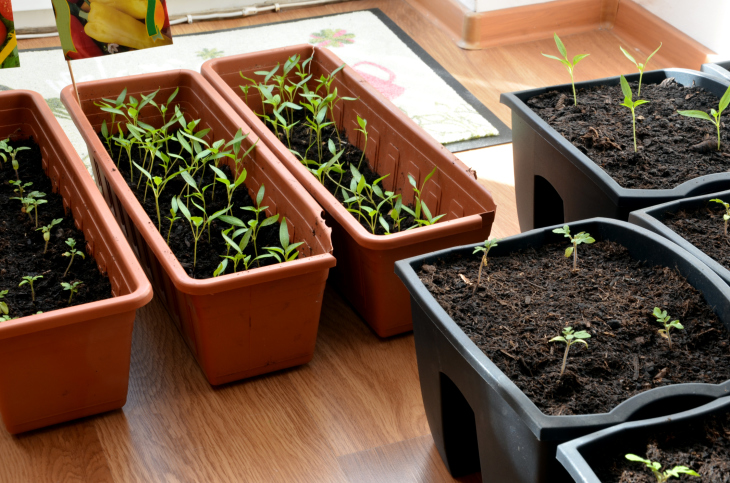There are many great reasons to live in an apartment community – beautiful floor plans, awesome amenities or on-call maintenance requests for example – but one thing that many apartment dwellers still struggle with is how to cultivate an apartment garden within the space provided.
Fortunately, there are many clever ways to turn a patio or sunny window into a flourishing garden area despite a lack of tillable earth and limited grow space. If you’ve been thinking about growing your own patio or window garden in your apartment this season, use these tips to get the most out of your space and the highest yield from your harvest.
Choose Your Plants Wisely
You don’t need a sunny, south-facing patio to reap the benefits of a home-grown veggie or flower patch, but you will need to grow the right plants if you want them to thrive. Depending on the amount of sunlight your patio receives daily, choose shade-loving flowers or veggies (broccoli, kale, celery, peas and carrots), partial shade plants (defined as two to four hours of sunlight per day) or plants that require full sun. Check labels and planting instructions to be sure of your plant’s needs.
Grow Vertically
Some plants need a lot of room to grow. Fortunately, you can train many to grow vertically up trellises or down hanging baskets to help you utilize all of your available space. When growing a fruit-bearing vine plant (like pumpkin or watermelon), remember to provide extra support for the fruit (old stockings or basketball nets, for example) so that the fruit will not grow too heavy and fall off before it’s ready.
Try Companion Planting
Companion plating is a method through which two or more plants are grown close to each other for the benefit of all. Whether intended to provide support, supplement the soil or deter pests, companion planting can be an excellent way to boost the production of any garden. Some examples include sunflowers for structural support, peas for a nitrogen boost, peppers for their anti-fungal properties or marigolds as a pest deterrent.
Supplement Your Soil
Like all living things, plants need the proper nutrition to thrive. To see that your plants get the nutrients they need, supplement your watering with organic fertilizer or toss a few left-over coffee grounds directly into the soil. Remember to pay close attention to the color of the leaves and growth pattern of the plant. If things take a turn for the worse, flush out the soil with fresh water and dial back the fertilizer regimen.
Monitor Moisture
Without water, your plants will shrivel and die, but too much water can suffocate the roots, as well. Make sure to water your apartment garden often but not too often to cause waterlog or root rot. The best way to prevent waterlogged plants is to use well-draining pots and avoid excessive watering. In cases of ample rainfall, bring your plants indoors or otherwise shield them from excess water and modify the soil with dry, organic matter when necessary to help restore waterlogged plants.
Heers Management
Whether this is your first apartment or your last, you deserve to make it feel like home. If you want an apartment garden to complete your home, use these tips to make it a blooming success! To learn more about apartment living, contact Heers Management today!

